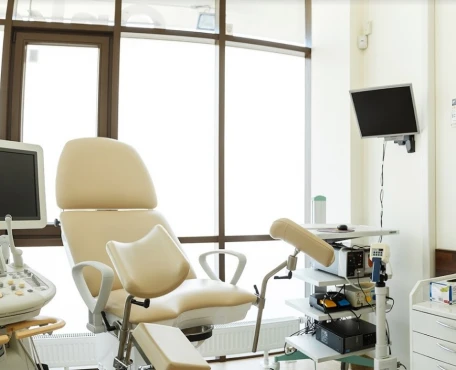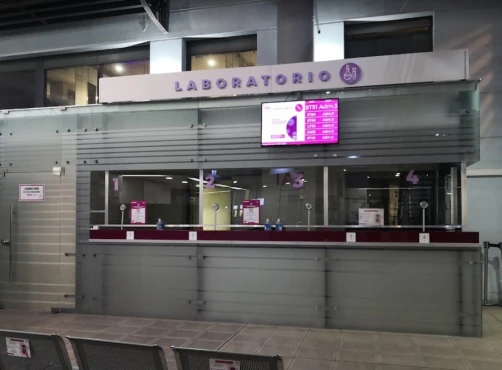Disease Types & Epidemiology
How common is the disease?
Duodenal cancer is an uncommon type of malignant tumor that starts in the duodenum, the first segment of the small intestine. The duodenum is a vital part of the digestive system, linking the stomach to the jejunum and helping to break down further the food we consume. This cancer is a rare form of small bowel cancer, which makes up approximately 3% of all gastrointestinal cancers. According to the National Cancer Institute data, around 12,500 new cases of duodenal cancer arise each year. Together with a 70% average five-year survival rate, the estimated number of patients living with duodenal and other part of small bowel cancers in 2021 was around 83,500 individuals in the US [NCI, 2024].
Epidemiologically, duodenal cancer is more frequently observed in older individuals, typically those over the age of 60, and has a slightly higher incidence among men compared to women. However, the scarcity of comprehensive epidemiological data on this rare cancer can be attributed to the nonspecific nature of its symptoms, which often leads to delayed diagnosis and detection at more advanced stages (61% of cases).
Duodenal cancer can take on different histological forms, with adenocarcinoma being the most prevalent. This type originates from the glandular cells lining the duodenum. Other, less common types include sarcoma, which arises from connective tissue cells; neuroendocrine tumors that develop from hormone-producing cells; and lymphoma, a cancer that begins in the lymphocytes, a type of white blood cell.
Causes & Risk Factors
What is the primary issue of duodenal cancer?
The exact causes of duodenal cancer remain unclear, but several factors have been identified that significantly raise the risk of developing this rare malignancy:
- Genetic factors: inherited conditions like Familial Adenomatous Polyposis (10% lifetime risk) and Lynch Syndrome (3-6%) are strongly linked to an increased risk of duodenal cancer.
- A diet high in fat and low in fiber, including large amounts of red and processed meats, can increase the risk by 18-21%.
- Chronic inflammation during conditions like Crohn's disease and celiac disease, which cause ongoing inflammation of the digestive tract, can raise the risk of duodenal cancer by up to 4 times. Chronic inflammation may lead to changes in the cells lining the duodenum, making them more susceptible to cancer.
- Smokers have about a 50% higher risk compared to non-smokers, and heavy alcohol consumption can increase the risk by around 20-25%.
- Men are slightly more likely to develop this cancer than women, with a male-to-female ratio of approximately 1.5:1.
- Being overweight or obese has been shown to increase the risk of duodenal cancer by about 30%.
Clinical Manifestation & Symptoms
What signs should one anticipate while suspecting duodenal cancer?
The symptoms of duodenal cancer can be pretty vague and nonspecific, often leading to a delayed diagnosis. Patients may experience abdominal discomfort or pain, feel nauseous and have episodes of vomiting, notice unintentional weight loss, and feel fatigued. Additionally, some individuals may notice gastrointestinal bleeding or have their intestines become obstructed, resulting in severe pain and more vomiting.
Diagnostic Route
When, where, and how should the duodenal cancer be detected?
Diagnosing duodenal cancer can be challenging due to its location within the small intestine [Kanagawa et al., 2022]. The diagnostic process typically involves several key steps:
1. Endoscopy: An upper endoscopy allows for direct visualization of the duodenum and obtaining tissue samples for biopsy. This is a critical tool for diagnosing duodenal cancer, which is divided into two options:
1.1. Double-balloon enteroscopy is an advanced endoscopic procedure that enables a more profound exploration of the small intestine, including the duodenum, and can be especially helpful in diagnosing obscure gastrointestinal bleeding.
1.2. Capsule endoscopy uses a visualizing technique involving swallowing a small, camera-equipped capsule that takes numerous images as it travels through the digestive tract, providing valuable insights into areas that are difficult to access with traditional endoscopy.
2. Imaging studies are chosen depending on the potential tumor stage and spreading status:
2.1. CT scans and MRIs provide detailed images of the abdomen and help determine the cancer stage.
2.2. Endoscopic ultrasound combines endoscopy and ultrasound to offer detailed images and assess the depth of tumor invasion.
2.3. PET scans detect cancer spread to other body parts.
3. A biopsy is a histological examination of the lesion samples that confirms the diagnosis and helps determine the type of duodenal cancer.
Treatment Approaches
What are the options for managing duodenal cancer?
Surgery, chemotherapy, targeted therapy, and immunotherapy are the four core treatment methods for different stages of duodenal cancer [Cancer.gov, 2024].
The surgical approach leads to the most outstanding curative results in localized duodenal cancer due to its radical removal of the whole tumor lesions by one of two procedures:
- Pancreaticoduodenectomy, also known as the Whipple procedure, is the most common surgery for duodenal cancer. This operation involves removing the duodenum, a portion of the pancreas, the gallbladder, and part of the bile duct. Despite its complexity, this procedure has a high success rate for treating localized duodenal tumors, with a five-year survival rate of approximately 40-60%.
- Duodenal segmental resection may extend to a lesser portion of the pancreas or bile duct system but is used for smaller localized duodenal tumors.
Chemotherapy is effective both as adjuvant (after the surgery in localized forms) and monotherapy in advanced duodenal cancer (5-fluorouracil, leucovorin, and irinotecan regimens). The successful therapeutic range in late-stage tumors stays in the 20-30% range of cases.
Targeted therapy (anti-EGFR – cancer cell growth factors inhibitors – erlotinib and cetuximab) and immunotherapy (pembrolizumab and nivolumab against PD-L1 immune checkpoints molecules) are reserved options with 15-20% response rate in heavily pretreated patients.
Prognosis & Follow-up
How does cutting-edge science improve the lifespan and quality of life for those with duodenal cancer?
Early-stage duodenal cancers generally have a more favorable prognosis, with around 85% of patients surviving at least five years when the disease is confined to the local area and 79% when lesions involve regional lymph nodes. Conversely, advanced-stage duodenal cancer carries a less favorable prognosis, with the five-year survival rate dropping significantly to approximately 45%.
After completing treatment for duodenal cancer, patients typically undergo a comprehensive follow-up regimen. Regular check-ups are scheduled every 3-6 months in the initial two years. During these visits, the healthcare team will conduct physical examinations, perform blood tests, and order imaging studies like CT scans to monitor the patient's progress and detect any signs of recurrence.
As the patient moves into the long-term follow-up phase, the frequency of visits may be reduced to every 6-12 months, depending on their situation and the risk of the cancer returning. This ongoing care will still include physical exams, along with periodic bloodwork to assess liver function and check for tumor markers. Additionally, imaging tests like CT scans or MRIs may be scheduled annually to thoroughly evaluate the patient's condition and ensure no concerning changes.


































































































